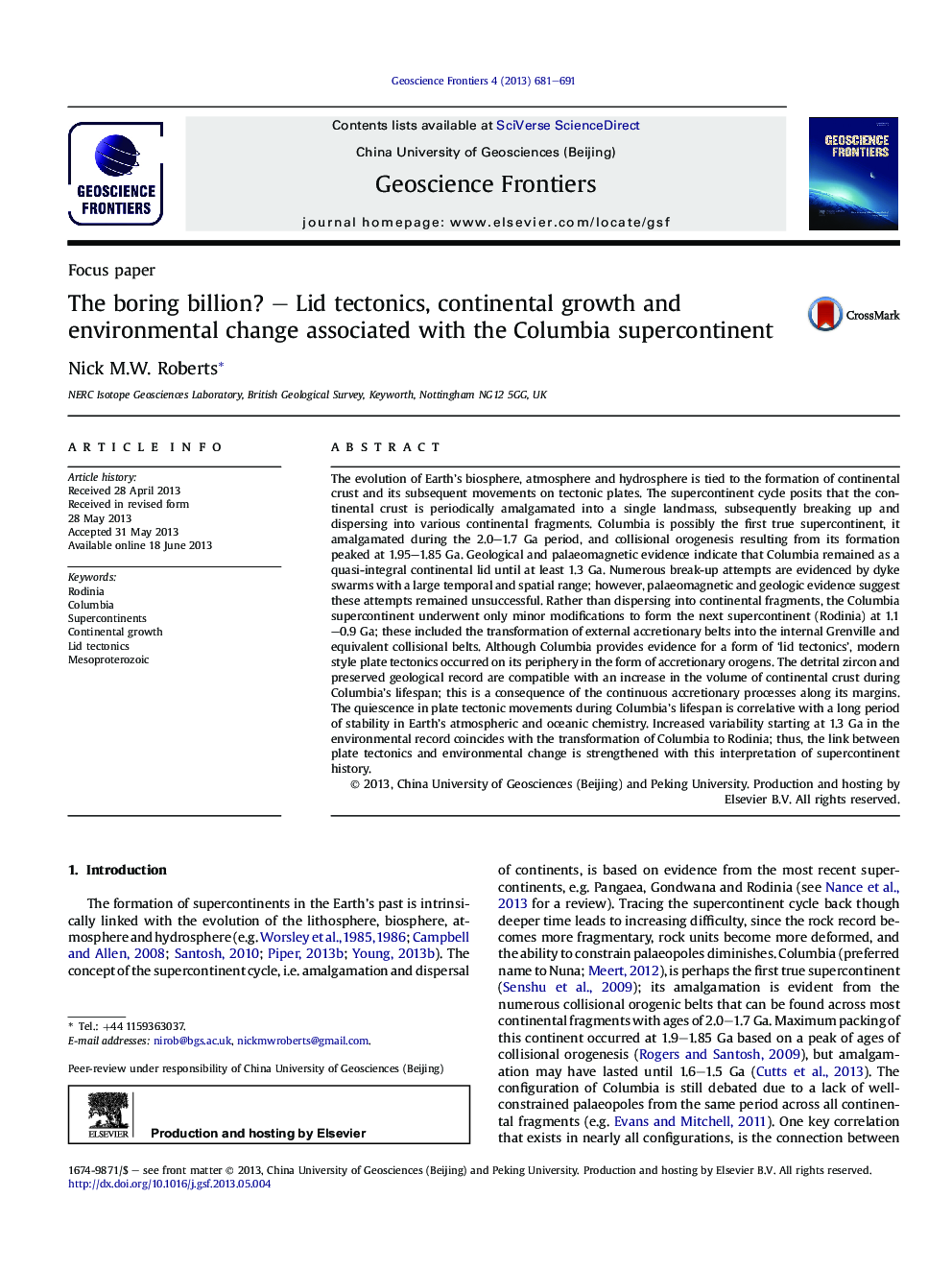| کد مقاله | کد نشریه | سال انتشار | مقاله انگلیسی | نسخه تمام متن |
|---|---|---|---|---|
| 4681650 | 1348864 | 2013 | 11 صفحه PDF | دانلود رایگان |

• Columbia was a continental lid from 1.8 to 1.3 Ga that never fully broke up.
• The 1.3 to 1.0 Ga extroversion to Rodinia involved minor movement between plates.
• During Columbia's lifespan continental growth outweighed continental loss.
• Supercontinents and changes in the atmosphere and oceans exhibit a strong link.
The evolution of Earth's biosphere, atmosphere and hydrosphere is tied to the formation of continental crust and its subsequent movements on tectonic plates. The supercontinent cycle posits that the continental crust is periodically amalgamated into a single landmass, subsequently breaking up and dispersing into various continental fragments. Columbia is possibly the first true supercontinent, it amalgamated during the 2.0–1.7 Ga period, and collisional orogenesis resulting from its formation peaked at 1.95–1.85 Ga. Geological and palaeomagnetic evidence indicate that Columbia remained as a quasi-integral continental lid until at least 1.3 Ga. Numerous break-up attempts are evidenced by dyke swarms with a large temporal and spatial range; however, palaeomagnetic and geologic evidence suggest these attempts remained unsuccessful. Rather than dispersing into continental fragments, the Columbia supercontinent underwent only minor modifications to form the next supercontinent (Rodinia) at 1.1–0.9 Ga; these included the transformation of external accretionary belts into the internal Grenville and equivalent collisional belts. Although Columbia provides evidence for a form of ‘lid tectonics’, modern style plate tectonics occurred on its periphery in the form of accretionary orogens. The detrital zircon and preserved geological record are compatible with an increase in the volume of continental crust during Columbia's lifespan; this is a consequence of the continuous accretionary processes along its margins. The quiescence in plate tectonic movements during Columbia's lifespan is correlative with a long period of stability in Earth's atmospheric and oceanic chemistry. Increased variability starting at 1.3 Ga in the environmental record coincides with the transformation of Columbia to Rodinia; thus, the link between plate tectonics and environmental change is strengthened with this interpretation of supercontinent history.
Figure optionsDownload as PowerPoint slide
Journal: Geoscience Frontiers - Volume 4, Issue 6, November 2013, Pages 681–691